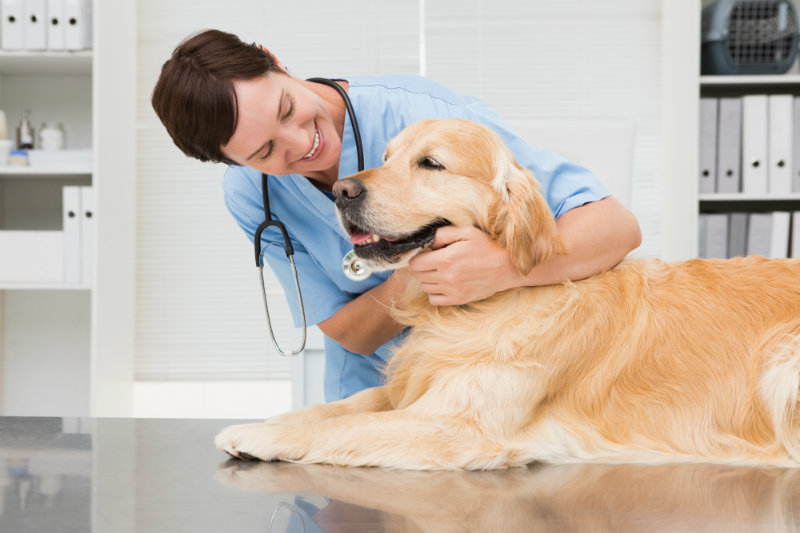Some pet emergencies are obvious, but others can be a bit subtle. Many animals are stoic and hide their illnesses, which can make things more complicated.
As a pet owner, you know your pet best, and they are generally the most relaxed around their family and in their own home. If you notice them acting strange or not following their routine, it’s a good idea to call your vet. There’s a good chance you are picking up on a subtle sign of illness, and a trip to the vet can help you get them feeling better.
People often ask us what is considered an emergency, and what can wait to be seen. This is not always straight forward, so when in doubt it’s always better to bring them for an exam. Even if nothing ends up being wrong, at least you will have the peace of mind that your pet is healthy.
There are some situations that require attention right away, and we’ll go through some of these below:
– Gastric Dilation and Volvulus (GDV): Often dogs will seem restless and are coughing and retching without bringing anything up. They may also have a noticeably bloated abdomen. These are common signs of a twisted stomach or bloat, which can be life-threatening. This is more common in large breed dogs.
– Urinary Blockage/Constipation: Any animals that are having trouble urinated or defecating should be seen right away, especially male cats. They are prone to urinary blockages from crystals in their urine. Early signs of urinary blockage include urinating in abnormal places, straining to urinate while only producing small amounts or urinating blood. This condition can become life threatening in a few short hours, so rapid treatment is recommended.
– Vomiting and diarrhea: Especially when it’s repetitive, not resolving or if you see blood. Animals can quickly become dehydrated, and your veterinarian can help identify an underlying cause and treatment plan.
– Respiratory distress: Difficulty breathing, severe exercise intolerance, collapse or open mouth breathing in cats. These can be signs of respiratory distress and need immediate treatment.
– Toxicity: If your pet has ingested a toxic substance treatment within the first 1-2 hours can be lifesaving by removing or treating the toxic substance before it is absorbed into the body. Common toxic substances include chocolate, grapes, raisins, plants (especially lilies), xylitol (artificial sweetener), prescription and non-prescription medications, anti-freeze and rat poison.
– Seizures: Any animal that has more than one seizure in a 24 hour period, has never had a seizure before or has a prolonged seizure (5 minutes or more) should be examined.
– Bleeding: Any cuts or wounds that do not stop bleeding when pressure is applied should be assessed by a vet. They may need proper cleaning, bandaging or stitches to heal.
– Severe lameness or reluctance to move: Most animals are stoic and do not cry out when they are in pain. If your pet is not using a limb, refuses to move or moves with a very hunched back stance they should be examined to rule out a broken bone, slipped disk or ligament injury. They may also benefit from pain medications specifically designed for animals. Many human pain medications are toxic to animals, so it’s important to consult your veterinarian to select the appropriate medication.
– Inappetence or lethargy longer than 24 hours duration: These can be a little more subtle, but animals don’t stop eating for no reason. Therefore, it is important to investigate the underlying cause before the illness becomes severe.
In the event of an emergency remain calm and get your pet to a veterinary clinic right away. Transport your pet gently and carefully (they may be uncomfortable and more likely to bite or scratch). If you think your pet has ingested inappropriate food or medication, please bring the packaging with you.
If possible, call your veterinarian to let them know you’re on your way. Most clinics can accommodate walk-in appointments and emergencies, but your vet will appreciate a heads up so they can have emergency treatments ready and be waiting for your arrival.
Written by Dr Samantha Sanford, DVM




